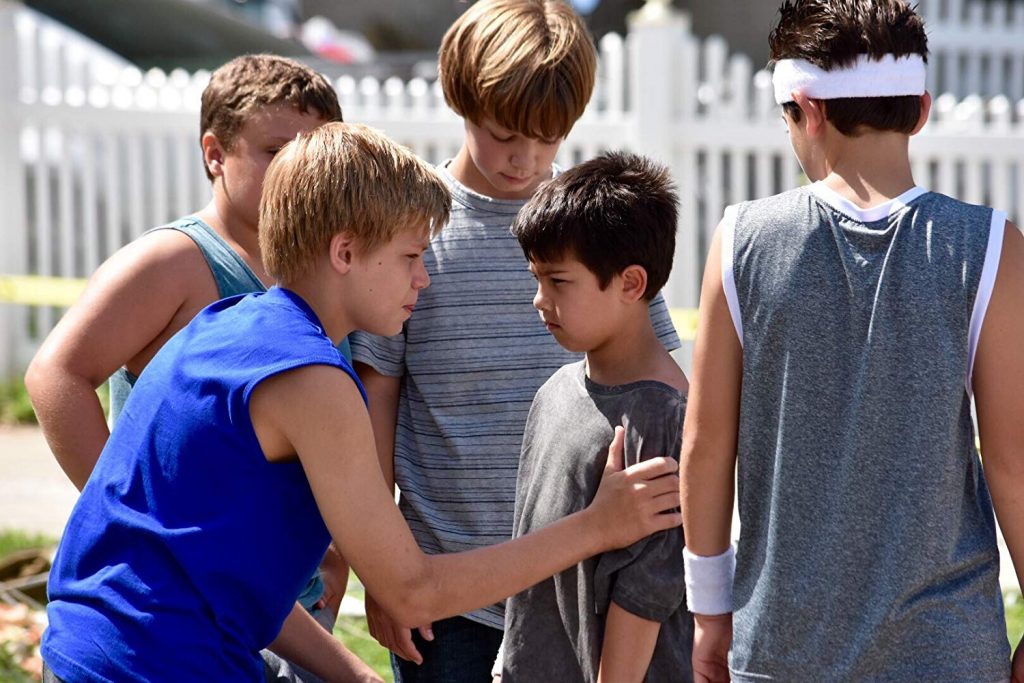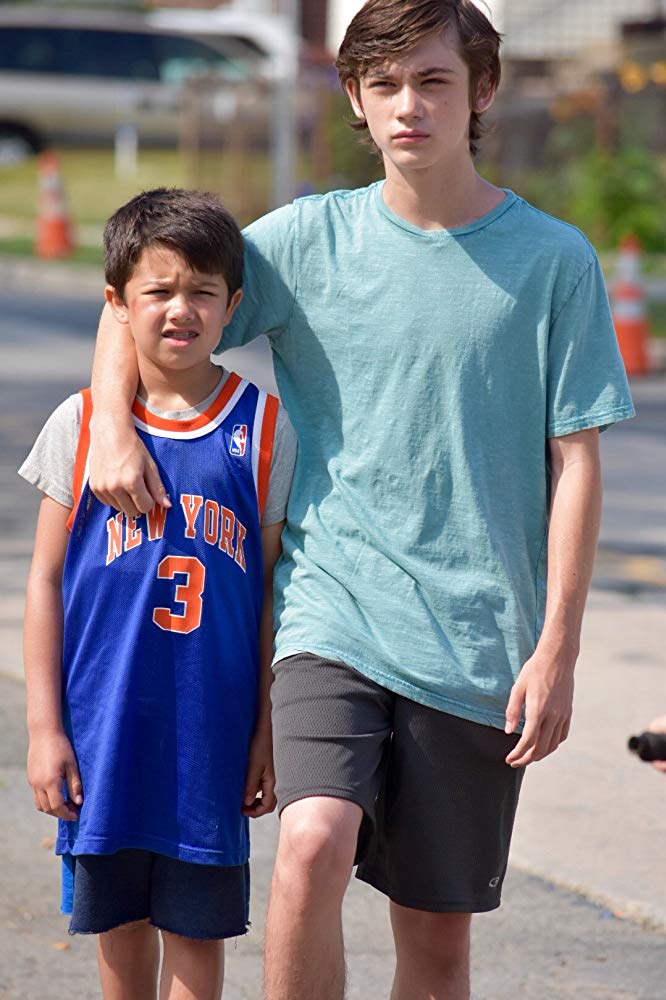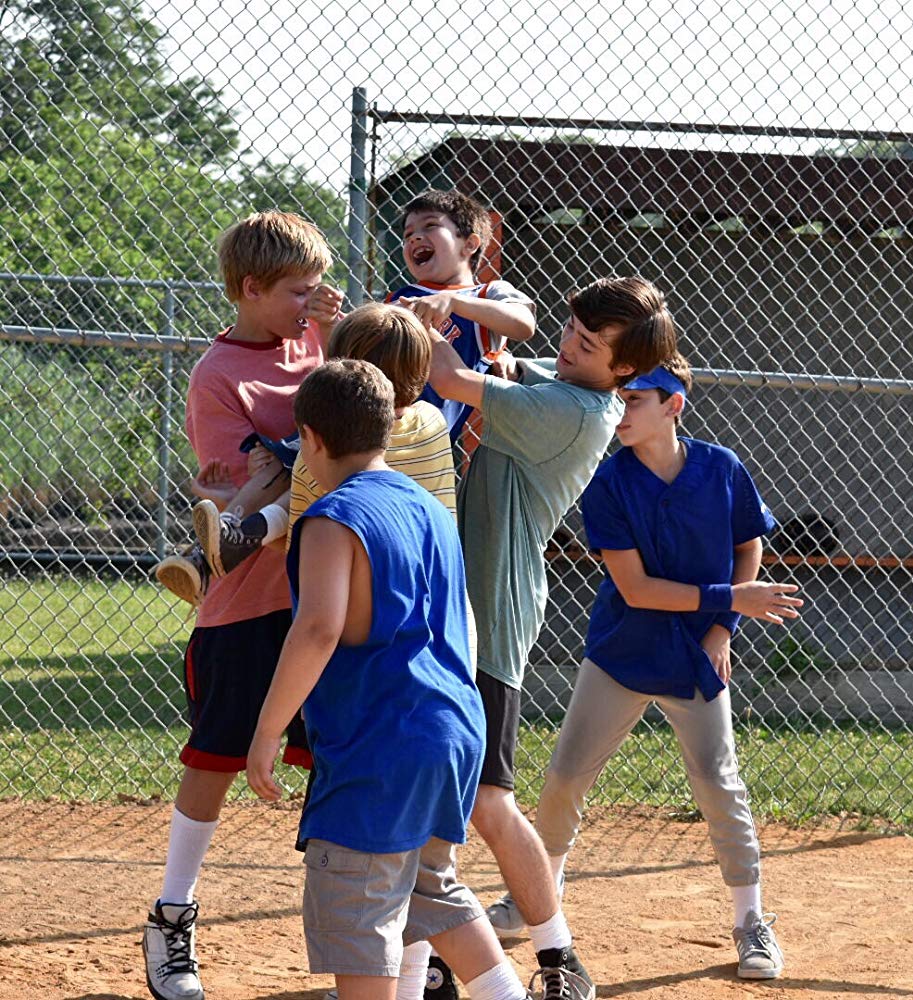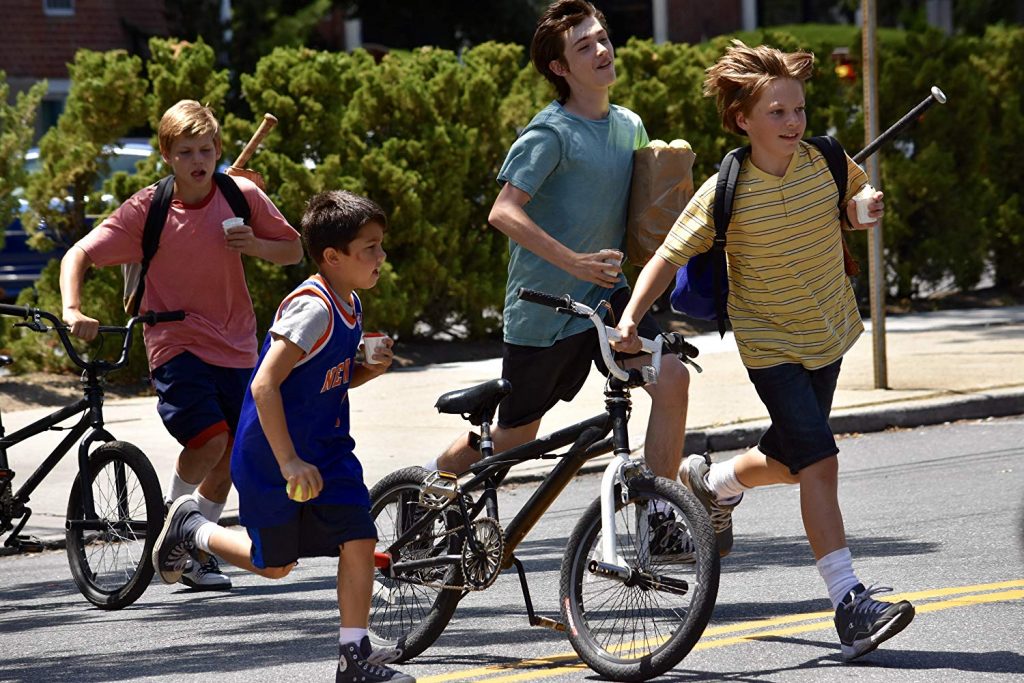Long an admirer of the visual effects work of John Budion thanks to films like “Midsommar”, “Submission”, “Zoolander 2″, “The Grand Budapest Hotel”, and the documentary “It Might Get Loud”, it didn’t take much to spark curiosity and interest as to what Budion would do when he stepped behind the lens as the writer and director of ROCKAWAY. From the opening frame, it’s obvious that Budion has found a new calling; that of a storyteller. ROCKAWAY tugs at the heart thanks to a solid narrative, immersive and intimate lensing, and an ensemble cast of young actors who steal your heart and then some. Needless to say, tissues are required for the viewing of this film, especially when we get to the third act.

Based on a true story, ROCKAWAY takes us back to 1994 in East Rockaway, Long Island, New York when we meet brothers Anthony and John. They live in a modest suburban home with their mom and a rage-infused, brutally abusive father. Anthony and John (a New York Knicks superfan) are closer than close with Anthony seeing himself as not only John’s protector, but their mother’s. We first meet the family with mom Linda planning to take the boys and escape the abuse of their father. She gives them a one week timeline before they can make their escape, but at least it’s a light at the end of the tunnel. But is that the kind of light that Anthony and John want?
Set during the week of June 12-20, 1994, the Knicks are in the NBA finals and Anthony and John are obsessed with the championship, especially John who’s favorite player is John Starks, so much so he wears a Sparks jersey everyday. But Sparks also plays a key role in John’s hidden passion – the fantasy world he creates through drawing. While John is the artist, Anthony is the storyteller, using stories as a means to occupy his little brother’s mind when their father is on a violent rampage.

Fearful and distrusting of all while also wanting to keep their home life situation behind closed doors and away from prying eyes of neighbors, Anthony and John are each other’s world; that is until they meet a group of fellow townies – Brian, Billy, Sal and Dom. Each boy is as engaging and authentic as the next. Brian is good looking and kind, Billy is the brains of the group, Sal is a typical Italian kid who dreams of being the next wiseguy, and Dom can crack a joke as easily as he passes gas. Initially facing off with the typical “who’s bigger and better” verbal sparring, once shaking hands and introducing themselves, all the boys quickly engage in a pick-up basketball game that by game’s end finds themselves as friends and cohorts.
As days go by, the boys grow ever closer and their friendships ever tighter while Anthony and John’s father grows more abusive. Knowing that the countdown to departure is getting closer, leaving is the last thing Anthony and John want to do because of their bond with Brian, Billy, Sal and Dom. And because of their strong friendship, Anthony and John have shared the hell of their home life with them. But, Anthony has another idea as to how to escape the torture of his father. He and John have been plotting how to kill him, something their friends desperately try to talk them out of.

Budion immerses us in this East Coast Rockaway world, a time and place where kids didn’t have cell phones and tablets and it was the norm to play outside, hook up with local kids on the ballfield and by a game’s end be best friends, to get some dirt on you, ride bikes, collect sports playing cards and stones, steal tennis balls, build forts, and just be outside under a beautiful blue sky and streaming sun and feeling like you don’t have a care in the world. He celebrates the gentleness and joy of this world while contrasting it with the hell Anthony and John and their mother face behind the closed door of their home.
Thanks to cinematographer Matthew Santos and Budion’s visual eye for storytelling, close-ups abound with varied camera angles, putting us into the headspace of each boy, particularly that of John and Anthony, while making us feel the whirlwind carefree days of summer as kids. His lensing is energetic and fluid immersing us in these young lives. Tightly framed we feel the friendship and closeness of the group and are drawn into their world. All of the boys are kept at eye level so we see the world from their perspective. Camera dutching goes far in creating an innate sense of fear when dad is on the rampage, always showing him in a power position but for a scene when Anthony fights back and POV shifts and we see Dad on the floor with Anthony towering over him. It’s a powerful moment in the father-son dynamic. Similarly, in a key scene when all of the boys are victim to Dad’s rage when he finds that cold cuts that were in the refrigerator in the morning are now gone and he accuses Anthony of eating them, one by one, each boy starts to rise from the couch in defiance to him and he loses some of his visual POV bravura.

Denis Henry Hennelly’s editing keeps the film well-paced and moving on an even keel. There is a fine balance between the lighter joys of childhood and friendship versus the horror behind closed doors.
The visuals play heavily into the strength of the film and showing us the real value of friendship. But it all starts with story and here the story and its construct are strong. Dealing with heavier adult-themes, Budion tackles them head on but with sensitivity and never loses sight of the fact the POV of the film comes from pre-teen kids. Smartly bookending the film and peppering it with narration by now adult John, along with fabulous chalk and crayon drawings from John’s world, expository dialogue is minimal. As to be expected, there are some underdeveloped aspects of the film, but they have their purpose in solidifying main characters and the film’s ultimate end.
Each character is well defined and three-dimensional, especially each boy. These are boys you can easily see as being in your own group of friends for life. And it’s that level of camaraderie and closeness that comes from indelible performances. Keidrich Sellati and Maxwell Apple, as Anthony and John, are the heart and soul of the film. Apple both steals your heart and breaks it with moments of ebullient joy and immobilizing fear. But as endearing as Sellati and Apple are together, Sellati’s real depth shows with palpable verismo in some emotionally powerful scenes opposite Wass Stevens. Stevens is chilling and pushes the envelope with anger and sheer brutalism. Harrison Wittmeyer’s Billy is a star-making turn as he brings subtlety and strength to the character while Tanner Flood’s Brian is thoughtful and quieter. Comedy abounds thanks to Colin Critchley’s embodiment of Sal and James DiGiacomo’s hilarious take on Dom.

Empathetic and redemptive, ROCKAWAY is a beautifully told story driven by heart and an ensemble of young actors who embody the characters with truth and authenticity as they face triumph and tragedy together, reminding us that it’s the friendships and brotherhood along the way that are the shining guiding lights through the darkness.
Written and Directed by John Budion
Cast: Keidrich Sellati, Maxwell Apple, Harrison Wittmeyer, Tanner Flood, Colin Critchley, James DiGiacomo, Wass Stevens
by debbie elias, 10/31/2019











